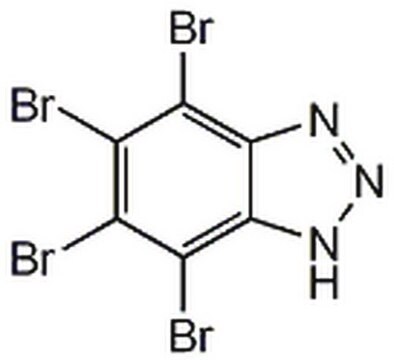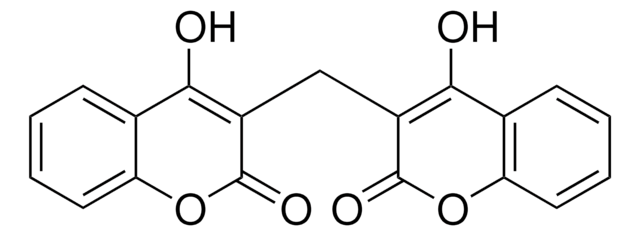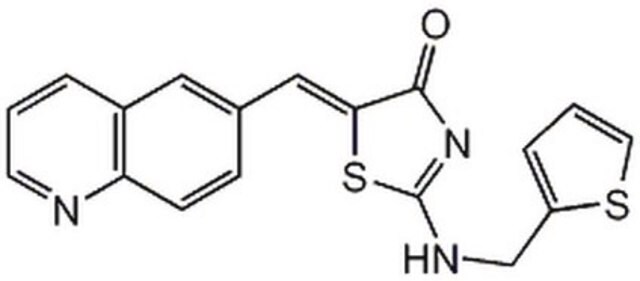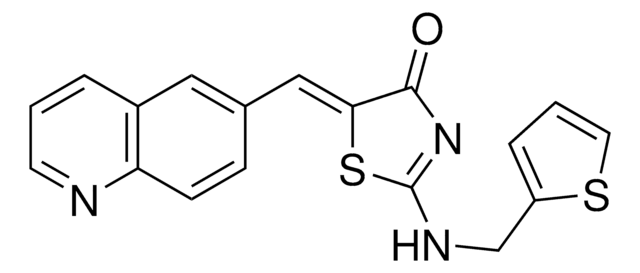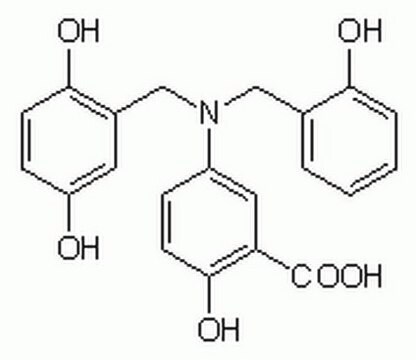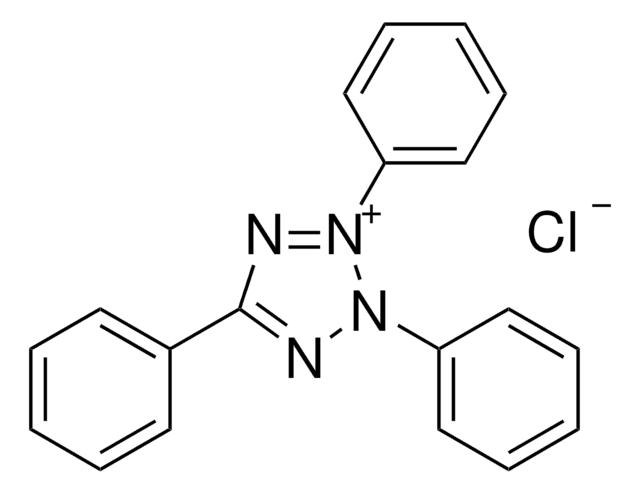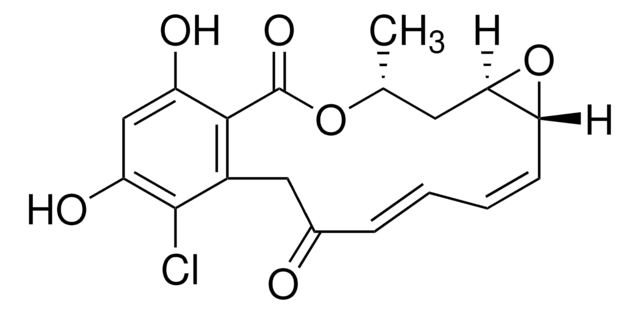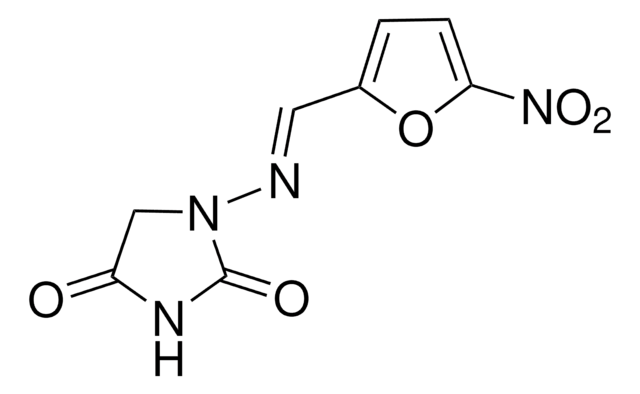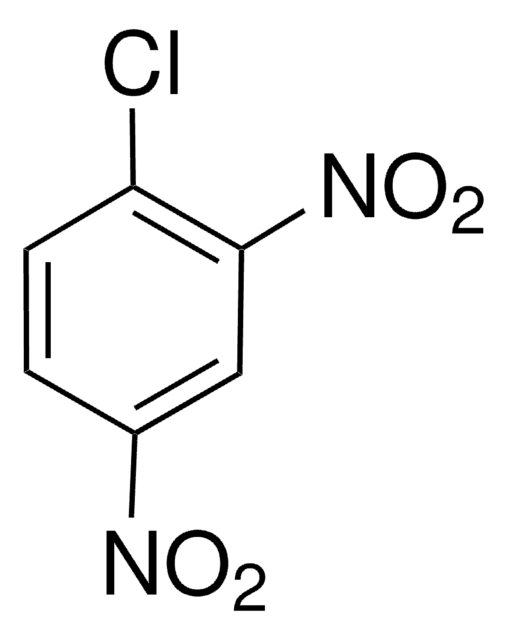287897
Dicoumarol
A cell-permeable quinone reductase inhibitor with anticoagulant properties.
Synonim(y):
Dicoumarol, 3,3ʹ-Methylenebis(4-hydroxycoumarin), Bishydroxycoumarin, Dicumarol
About This Item
Polecane produkty
Poziom jakości
opis
Merck USA index - 14, 3090
Próba
≥98% (titration)
Formularz
solid
producent / nazwa handlowa
Calbiochem®
warunki przechowywania
OK to freeze
protect from light
kolor
white
rozpuszczalność
0.1 M NaOH: 15 mg/mL
pyridine: 50 mg/mL
Warunki transportu
ambient
temp. przechowywania
2-8°C
ciąg SMILES
[o]1c2c(c(c([c]1=O)Cc3[c]([o]c4c(c3O)cccc4)=O)O)cccc2
InChI
1S/C19H12O6/c20-16-10-5-1-3-7-14(10)24-18(22)12(16)9-13-17(21)11-6-2-4-8-15(11)25-19(13)23/h1-8,20-21H,9H2
Klucz InChI
DOBMPNYZJYQDGZ-UHFFFAOYSA-N
Opis ogólny
Działania biochem./fizjol.
Blocks brefeldin A-dependent mono-ADP-ribosylation in vitro
Opakowanie
Ostrzeżenie
Rekonstytucja
Inne uwagi
Krause, D., et al. 2001. J. Biol. Chem.276, 19244.
Pink, J.J., et al. 2000. J. Biol. Chem.275, 5416.
Cross, J.V., et al. 1999. J. Biol. Chem.274, 31150.
Morrow, C.S., et al. 1998. J. Biol. Chem.273, 20114.
Weigert, R., et al. 1997. J. Biol. Chem.272, 14200.
Informacje prawne
Hasło ostrzegawcze
Danger
Zwroty wskazujące rodzaj zagrożenia
Zwroty wskazujące środki ostrożności
Klasyfikacja zagrożeń
Acute Tox. 3 Oral - Aquatic Chronic 2 - STOT RE 1 Oral
Kod klasy składowania
6.1C - Combustible acute toxic Cat.3 / toxic compounds or compounds which causing chronic effects
Klasa zagrożenia wodnego (WGK)
WGK 3
Temperatura zapłonu (°F)
Not applicable
Temperatura zapłonu (°C)
Not applicable
Certyfikaty analizy (CoA)
Poszukaj Certyfikaty analizy (CoA), wpisując numer partii/serii produktów. Numery serii i partii można znaleźć na etykiecie produktu po słowach „seria” lub „partia”.
Masz już ten produkt?
Dokumenty związane z niedawno zakupionymi produktami zostały zamieszczone w Bibliotece dokumentów.
Klienci oglądali również te produkty
Nasz zespół naukowców ma doświadczenie we wszystkich obszarach badań, w tym w naukach przyrodniczych, materiałoznawstwie, syntezie chemicznej, chromatografii, analityce i wielu innych dziedzinach.
Skontaktuj się z zespołem ds. pomocy technicznej